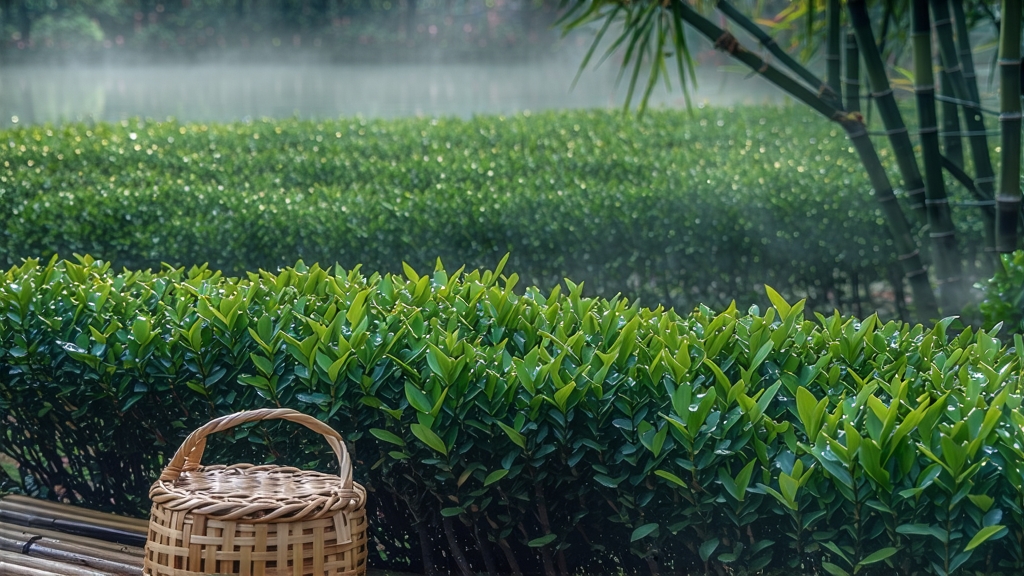
If green tea were a language, Biluochun would be its most whispered love poem. Barely 1.5 cm long, a single downy curl contains centuries of Chinese horticultural genius, the perfume of apricot blossoms, and the mineral breath of Taihu Lake. To the uninitiated it looks like a pile of tiny snail shells—hence the name “Green Snail Spring”—yet once it meets 75 °C water it uncurls into a living leaf and releases a fragrance so seductive that Qing-dynasty poets claimed it “makes the south of the Yangtze drunk.”
1. Historical roots: from temple terraces to imperial cups
The first written record appears in the Tang Dynasty’s “Classic of Tea,” but Biluochun’s fame crystallized during the late Ming when growers in Dongting East and West Mountains (islands actually, in Taihu Lake) noticed that tea bushes planted among fruit trees absorbed their blossom aroma. In 1699 the Kangxi Emperor tasted the local tribute tea, found it “astonishingly green, astonishingly fragrant,” yet disliked its original name “Xia Sha Ren Xiang” (literally “scary fragrance”). He rechristened it Biluochun—“green snail of spring”—and sealed its celebrity.
2. Micro-terroir: lake, mist, and rock
Unlike other famous greens grown on remote peaks, Biluochun thrives at a mere 50–200 m above sea level on porous limestone islands. Taihu’s vast surface stores daytime heat and releases night-time mist, creating a natural shade that slows photosynthesis, concentrates amino acids, and fosters the silvery fuzz that gives the tea its silken mouthfeel. The interplanting tradition—tea among peach, plum, apricot, and loquat—means the leaf is literally marinated in floral volatiles weeks before picking.
3. Cultivars: two mountains, two styles
- Dongting Dong Shan (East Mountain): quartz-rich soils, slightly sloped terraces, yield the softest buds and a lily-like lift.
- Dongting Xi Shan (West Mountain): steeper, clay-loam hillsides give sturdier leaves and a nuttier finish.
Modern clonal selections such as “Xiangbi” (fragrant green) and “Su-style 98” increase frost resistance yet still require the same hand-pluck standard: one bud plus one unfolding leaf, ≤2.5 cm total length, picked before Qingming festival when 100 g of finished tea needs roughly 9,000 tips.
4. Craft: the 10-minute ballet of fire and finger
Biluochun is the only famous green still entirely pan-fired by hand in cast-iron woks brushed with local tea-seed oil. A master “sha-qing” (kill-green) step lasts 3–4 minutes at 180 °C, during which the picker-turned-craftworker tosses, presses, and rubs the leaves 300–400 times without breaking the cell walls. Immediately the temperature drops to 65 °C for the spiral-shaping phase: the tea is rolled against the wok in a counter-clockwise motion, coaxing it into the signature snail curl while white down becomes visible. Final moisture is 6–7 %. From pluck to finished product the window is six hours; after that, enzymatic oxidation dulls the jade color.
5. Grading: how to read the curl
Top-grade “Special Supreme” displays:
- Jade-silver color with >90 % tips.
- Uniform 1.5 cm curls that snap cleanly.
- A dry aroma reminiscent of lychee and sweet corn.
Lower grades contain more open leaves, darker olive tone, and flattened spirals—still delicious but lacking the kinetic energy of the bud.
6. Brewing: the cool dance
Equipment: 150 ml glass gaiwan or tall cylindrical glass to watch the “tea rain.”
Leaf: 3 g (≈1 heaping teaspoon).
Water: spring or low-mineral, 75 °C; boiling water scalds the fuzz and turns liquor cloudy.
Steps:
- Warm the vessel, then add leaves.
- Shake gently; the dry heat releases a scent of magnolia.
- Fill to one-third capacity, swirl 5 seconds to “awaken” the tea, pour off (this first rinse is optional but tames astringency).